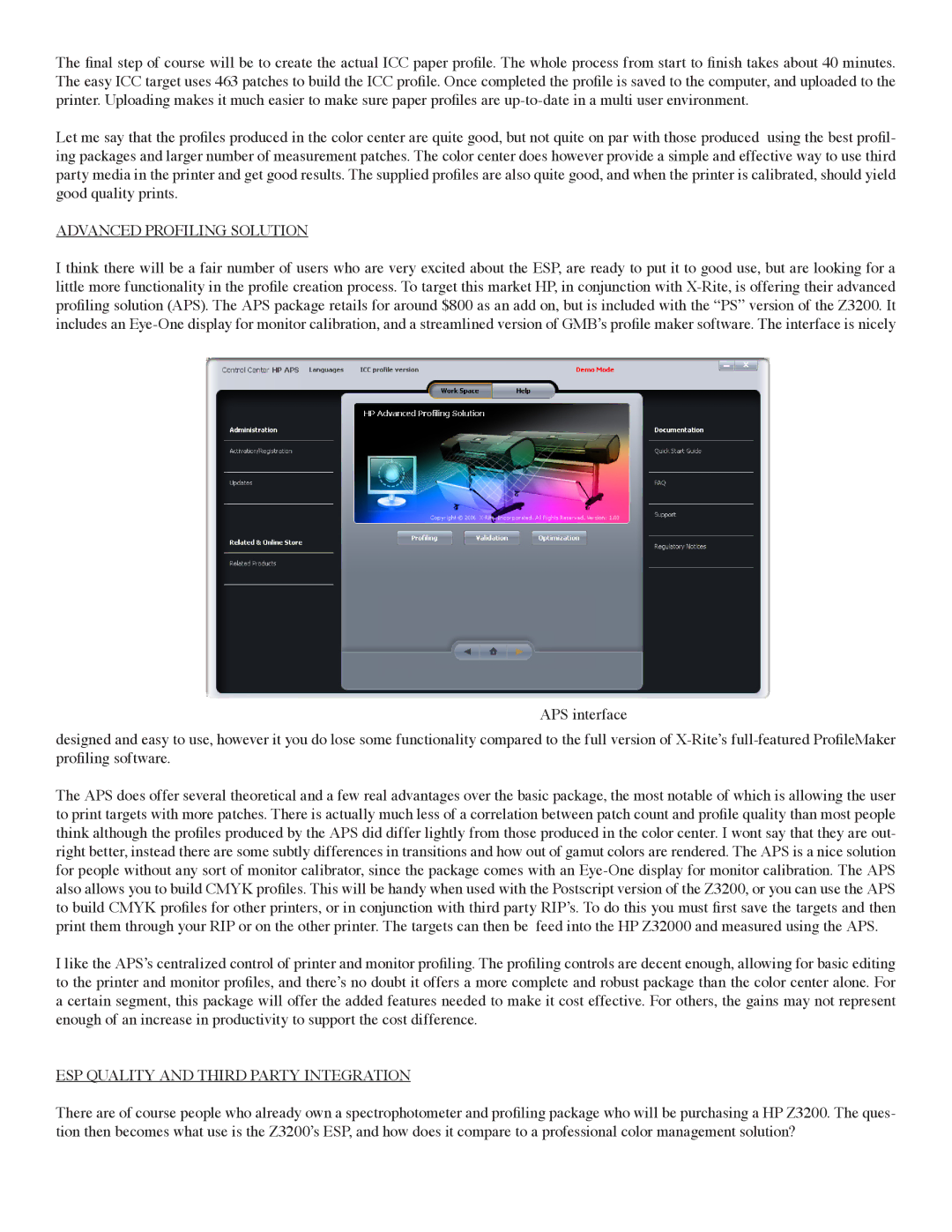
The final step of course will be to create the actual ICC paper profile. The whole process from start to finish takes about 40 minutes. The easy ICC target uses 463 patches to build the ICC profile. Once completed the profile is saved to the computer, and uploaded to the printer. Uploading makes it much easier to make sure paper profiles are
Let me say that the profiles produced in the color center are quite good, but not quite on par with those produced using the best profil- ing packages and larger number of measurement patches. The color center does however provide a simple and effective way to use third party media in the printer and get good results. The supplied profiles are also quite good, and when the printer is calibrated, should yield good quality prints.
ADVANCED PROFILING SOLUTION
I think there will be a fair number of users who are very excited about the ESP, are ready to put it to good use, but are looking for a little more functionality in the profile creation process. To target this market HP, in conjunction with
APS interface
designed and easy to use, however it you do lose some functionality compared to the full version of
The APS does offer several theoretical and a few real advantages over the basic package, the most notable of which is allowing the user to print targets with more patches. There is actually much less of a correlation between patch count and profile quality than most people think although the profiles produced by the APS did differ lightly from those produced in the color center. I wont say that they are out- right better, instead there are some subtly differences in transitions and how out of gamut colors are rendered. The APS is a nice solution for people without any sort of monitor calibrator, since the package comes with an
I like the APS’s centralized control of printer and monitor profiling. The profiling controls are decent enough, allowing for basic editing to the printer and monitor profiles, and there’s no doubt it offers a more complete and robust package than the color center alone. For a certain segment, this package will offer the added features needed to make it cost effective. For others, the gains may not represent enough of an increase in productivity to support the cost difference.
ESP QUALITY AND THIRD PARTY INTEGRATION
There are of course people who already own a spectrophotometer and profiling package who will be purchasing a HP Z3200. The ques- tion then becomes what use is the Z3200’s ESP, and how does it compare to a professional color management solution?
